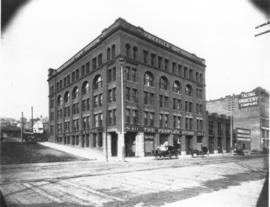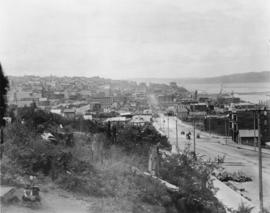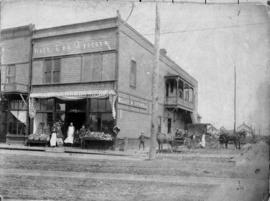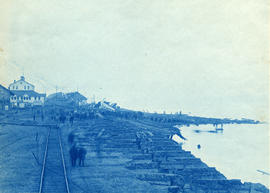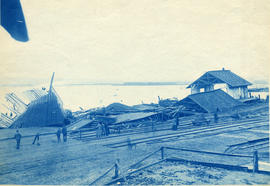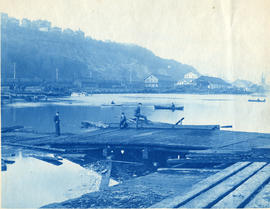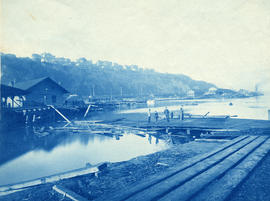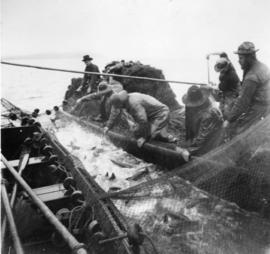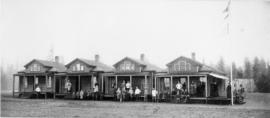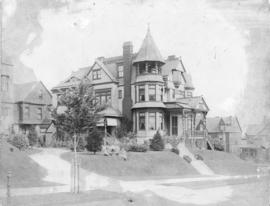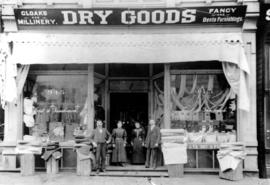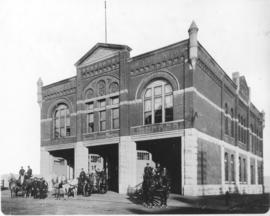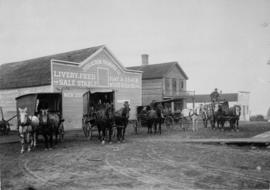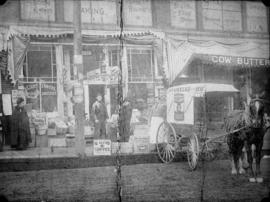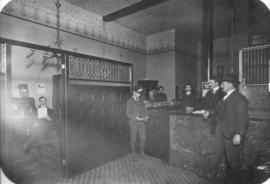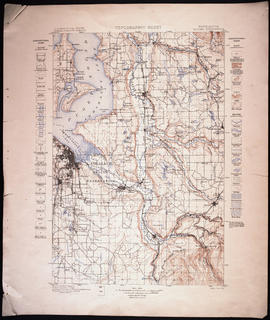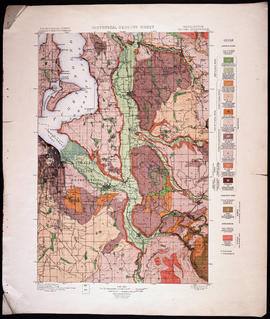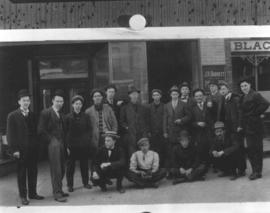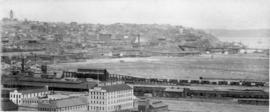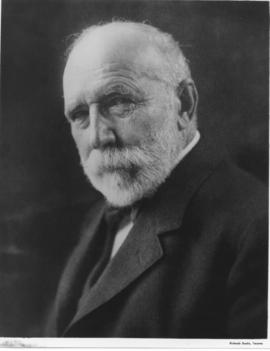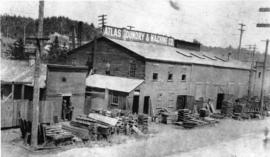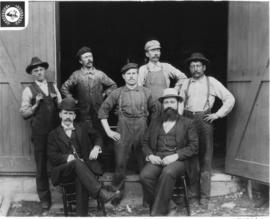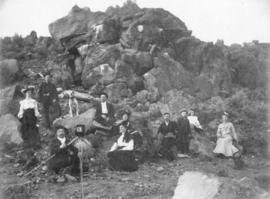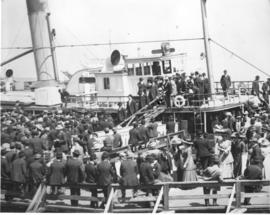- Item
- 1893
Part of Richards Studio Photographs
ca. 1893. Copy negative of photograph of old Peoples department store when it was at the corner of 19th and Pacific. At this time, the address was known as 1834-1840 Pacific Ave.The five story Romanesque building was built in 1890 from a design by F.A. Sexton. It is known as the Garretson-Woodruff-Pratt building. In the twenties, the building housed Sears and Roebuck. It is now part of the University of Washington-Tacoma campus. Two horse-drawn carriages parked in front of store. Photograph appeared in the Tacoma Times 07-19-1939. The store had its origins as a wholesale business, begun in 1889 a few months before statehood, in the Baker Building at 1306-08 Pacific. After four years, the company moved to this location. It converted to retail sales and took the name "Peoples Store." The day that it opened, it was crowded morning to night. In 1895, the store relocated to 1101-07 Pacific. The Peoples Store closed in 1983. (T. Times 7/19/1939, pg. 17)
Department stores--Tacoma--1890-1900; Peoples (Tacoma);
